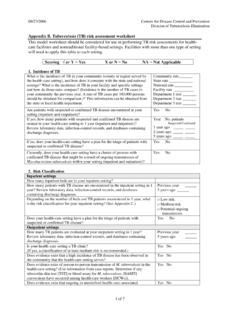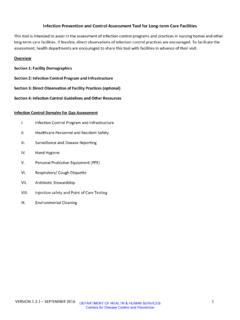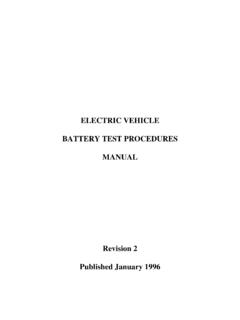Transcription of ResourceSmart Schools Waste audit tool
1 Waste audit tool A practical guide for Victorian Schools ResourceSmart Schools Waste audit tool While reasonable efforts have been made to ensure Sustainability Victoria 2020 that the contents of this publication are factually correct, Sustainability Victoria gives no warranty regarding its Authorised and published accuracy, completeness, currency or suitability for any by Sustainability Victoria, particular purpose and to the extent permitted by law, Level 28, Urban Workshop does not accept any liability for loss or damages incurred as 50 Lonsdale Street Melbourne a result of reliance placed upon the content of this publication.
2 Victoria 3000 Australia This publication is provided on the basis that all persons Accessibility accessing it undertake responsibility for assessing the This document is available in PDF relevance and accuracy of its content. and Word format on the internet at ResourceSmart Schools Waste audit tool should be attributed to Sustainability Victoria. ISBN 978-1-920825-61-4 (PDF). ResourceSmart Schools Waste audit tool (excluding all trade marks and logos) is licensed under a Creative Commons Attribution International licence. In essence, you are free to copy, distribute and adapt the work, as long as you attribute the work and abide by the other licence terms.
3 Go to to view a copy of this licence. ii Contents About this audit 2. What's the difference between Waste and litter? 4. Tips for a successful audit 5. Teacher/facilitator audit checklist 6. Worksheet Gather background information with school staff 9. Worksheet I love separating my Waste 11. Worksheet Current Waste practices at our school 13. Worksheet What's in our landfill bins? 14. Worksheet What's in our commingled recycling bins? 15. Worksheet What's in our paper and cardboard recycling bins? 16. Appendix 1: Waste and recycling category labels 17. Appendix 2: Resources 23. Appendix 3: Curriculum links 24.
4 Glossary 25. 1. About this audit Welcome to the ResourceSmart Schools (RSS) Waste audit tool. The audit tool helps you identify the types of Waste generated at your school, where the Waste comes from, and how much Waste gets recycled, composted or sent to landfill. You will assess your Waste management systems (bins, signage, composting and worm farms) and Waste collection contracts. Completing a Waste audit and a litter audit are compulsory actions of the RSS Waste module. You can then analyse your data to find ways to improve Waste management and resource recovery, recording your ideas and next steps in your Waste action plan.
5 ResourceSmart Schools audit their Waste every year and upload results, photos and presentations to the RSS online system as part of the Waste module. The first audit provides baseline data and subsequent audits monitor progress against baseline data. The Waste module is one of 5 modules in the RSS program. The other modules are core, biodiversity, energy and water. Schools must accomplish a set number of actions to complete each module and receive a certificate valid for four years. 2 ResourceSmart Schools Waste audit tool The Waste module has two separate audits one for litter and one for Waste : Waste audit + Litter audit Waste action plan Strategy to minimise Waste and improve resource recovery and recycling What's included in this tool?
6 The difference between Waste and litter Tips for completing the audit Checklists to guide teachers/facilitators through the audit Six worksheets Waste and recycling category labels, extra resources and linking audit activities to the Victorian Curriculum (see the appendix). Glossary of Waste terms What does the audit involve? Teachers and students work together to assess Waste and recycling at their school. Teachers will do some preparation and follow-up work (see audit checklists) and students will complete worksheets on audit day. Who should do the audit ? The worksheets are best suited to students in Years 3 to 10, with the supervision and guidance of a teacher.
7 How long does the audit take? Teachers will use their discretion to determine a realistic timeframe for each step of the Waste audit . How does the audit link to the Victorian Curriculum? Exploring the concept of Waste , which includes a Waste audit , contributes to several learning areas in the Victorian Curriculum (see Appendix 3: Curriculum links). Involving students in this audit also helps with: Critical and creative thinking: Responding effectively to environmental, social and economic challenges requires young people to be creative, innovative, enterprising and adaptable, with the motivation, confidence and skills to use critical and creative thinking purposefully.
8 Mathematics: Conducting a Waste audit can incorporate using units of measurement, data and interpretation, chance, patterns, fractions, decimals and numbers. Download curriculum guides from Where can I find more information? Visit for a module checklist and how to' guide packed full of ideas on how to work with students and the school community to reduce Waste and increase resource recovery. 3. What's the difference between Waste and litter? Waste is used very broadly to describe items or materials that have been discarded because they are no longer wanted or no longer fit for purpose or cannot be used again for their original purpose (food packaging for example).
9 Much of what is generally considered to be Waste can be reused, repurposed or recovered for recycling. Litter is Waste that is outside the Waste management system. In Schools , this may be Waste that has been dropped, illegally dumped, blown by the wind from bins without lids or blown in from outside the school. Common Waste materials in Schools include food, paper and packaging, glass, plastic and aluminium. Sending Waste to landfill without recovering materials that can be recycled, reused or composted is not sustainable. As these materials rot under mountains of other rubbish they release greenhouse gases that contribute to climate change.
10 In just one year (2019), ResourceSmart Schools collectively avoided 31,500 cubic metres of Waste . That's the equivalent of 126 Olympic-sized swimming pools filled with Waste ! They did this by minimising Waste going to landfill and improving resource recovery and recycling. 4 ResourceSmart Schools Waste audit tool Tips for a successful audit Pick a suitable date Doing your Waste audit the day before bins are collected will give you the best sample of your school's Waste . Try to avoid Term 4 classroom clean-ups or events such as fetes or camps. Mornings are better due to heat and odour. Select location of sample bins Ideally, you want to audit every bin in the school, but if that's not possible, audit at least 6 landfill bins and 6 recycling bins.





